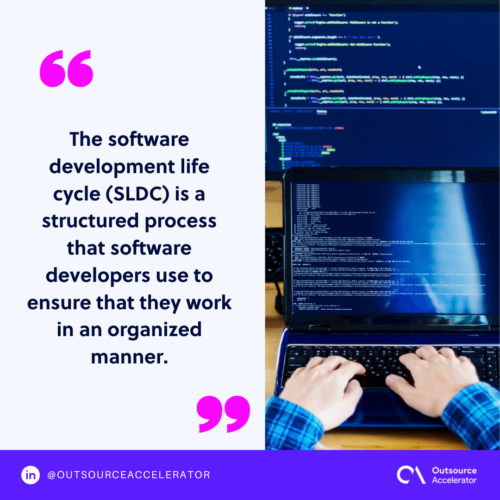Exploring the 5 stages of the software development life cycle

Software development is a long, heavy process that requires a lot of careful planning and resources.
In this modern landscape, highly skilled software developers now have their own methodology that helps them work in an organized manner to achieve their goals.
This is called the software development life cycle (SDLC).
Each stage in this model plays a critical role in ensuring your software development journey is exactly as you envision it.
What is the software development life cycle?
The software development life cycle (SLDC) is a structured process that software developers use to ensure that they work in an organized manner.
Since software development is a complex process, the SDLC breaks it down into simpler, more manageable steps that aim to deliver high-quality software requirements and deliverables.

Importance of software development life cycle
The main goal of the software development life cycle is to create the highest quality software in the shortest amount of time without compromising quality.
Without this life cycle guiding software developers, they would be completely lost and disorganized, greatly affecting results.
The software development life cycle helps reduce risks by identifying them early on and adjusting accordingly.
Furthermore, it enhances collaboration and communication among software development teams and clients, keeping them on the same page.
5 stages of the software development life cycle
The software development life cycle can be broken down into five main stages: Planning, designing, building, testing, and deployment.
1. Planning
The planning phase is where the team gets the ball rolling by:
- Acquiring resources
- Setting a budget
- Coordinating schedules
This stage is the team’s chance to gain input from stakeholders, experts, and customers to help them develop the perfect software.
Everything is then synthesized into a detailed plan of action.
2. Designing
Once the team is certain about what kind of software to create, the designing phase begins. In this stage, developers figure out how to acquire what they want.
This is where they determine their software requirements and specifications. The plan is then reviewed by the stakeholders, where they can provide comments and areas of improvement.
3. Building
After finalizing the software’s design and specifications, it is time to start building the actual program. This is where a lot of coding comes into play.
The developers must follow their agreed design plan. Otherwise, they may have to go back to square one and make some revisions.
4. Testing
Once the software is built and completed, the team performs several tests to ensure it runs smoothly and without error.
In this software development life cycle stage, the team determines if they fulfilled the specified requirements and if the program runs the intended way. This is their chance to fix any bugs or errors.
5. Deployment
In the deployment stage, the software program is released and ready to be used by the stakeholders. It is the final step before releasing it to the market.
It is the team’s final chance to gain feedback and spot any last-minute errors and changes that need fixing. Once the product is usable and cleared of all errors, it is released to the public.
Offshoring software development with Arcanys
Having the right team of software developers could mean the difference between a smooth life cycle and a rocky one.

Fortunately, reputable outsourcing companies like Arcanys can provide you with the right software development specialists. Its highly skilled developers are ready to provide the best services possible.
Check out Arcanys’ website to learn more about this amazing opportunity!







 Independent
Independent




